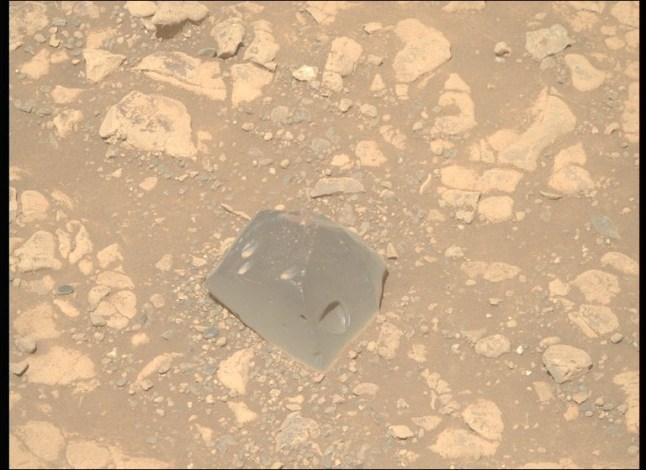
Mars may be our nearest neighbour, but there’s a lot up there which we have no idea about.
Astronomers and conspiracy theorists have been busy spotting strange things on the surface for decades – from a dildo to a ‘giant mouse’, human bones and even the Star Trek logo.
Most of these sightings are complete fantasy based purely on rocks looking a bit funny, like that time people found an eerie face withering in the harsh light of the Sun.
But now even Nasa is confused about a weird ‘skull’-like rock lolling on the surface of the Red Planet.
Actually, it happens to be near where the ‘face’ was spotted earlier, which was also in the Jezero Crater.
In a blog post last week, the US space agency shared a photo taken by the Perseverance rover, which has been driving aound on Mars for over four years while sending photos back to Earth.
The photo was taken by Mastcam-Z, a raised camera, as the rover made its way down lower ‘Witch Hazel Hill’ on the crater rim.
To view this video please enable JavaScript, and consider upgrading to a web
browser that
supports HTML5
video
It shows a rock much darker than the surrounding light reddish ground, with an angular surface, which is covered in tiny pits.
Explaining the finding, PhD student Margaret Deahn wrote: ‘We’ve found a few of these dark-toned floats in the Port Anson region, and the team is working to better understand where these rocks came from and how they got here.’
She said its dark colour is similar to meteorites found on Mars previously, but analysis of composition of similar rocks nearby indicates it isn’t one.
Another possibility is that it could be an igneous rock formed from cooled down magma or lava (there are volcanoes on Mars too).

‘These rocks can include dark-colored minerals such as olivine, pyroxene, amphibole, and biotite,’ the Nasa blog wrote.
If this is what it is, it could have got where it is due to erosion or being ejected from an impact crater.
Although Nasa has dubbed it ‘Skull Hill’, you can breathe easy that it is not literally a skull of an alien rolling around there for eternity.
For now, though, it’s still classed as ‘origin uncertain’.
Get in touch with our news team by emailing us at webnews@metro.co.uk.
For more stories like this, check our news page.


